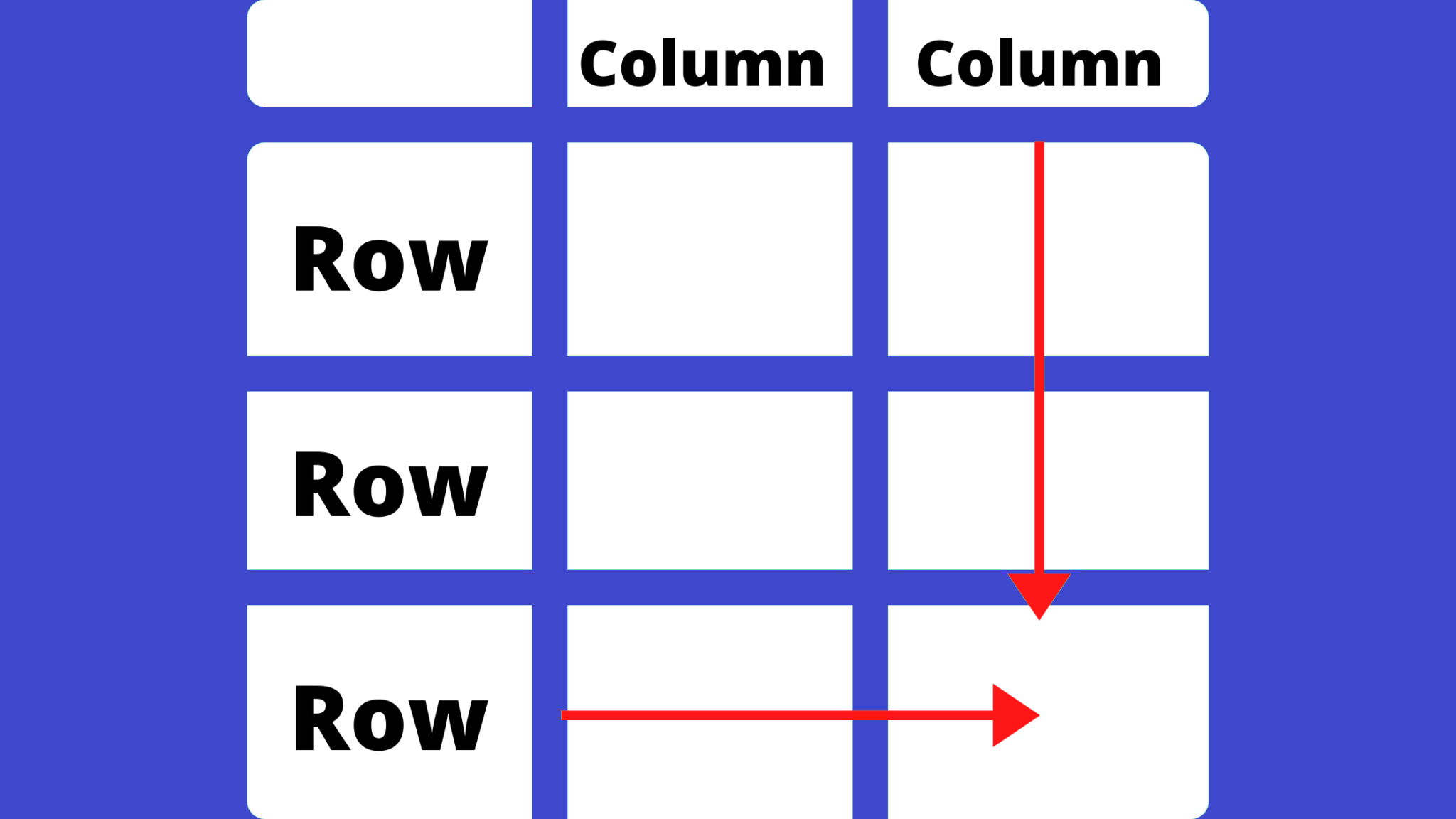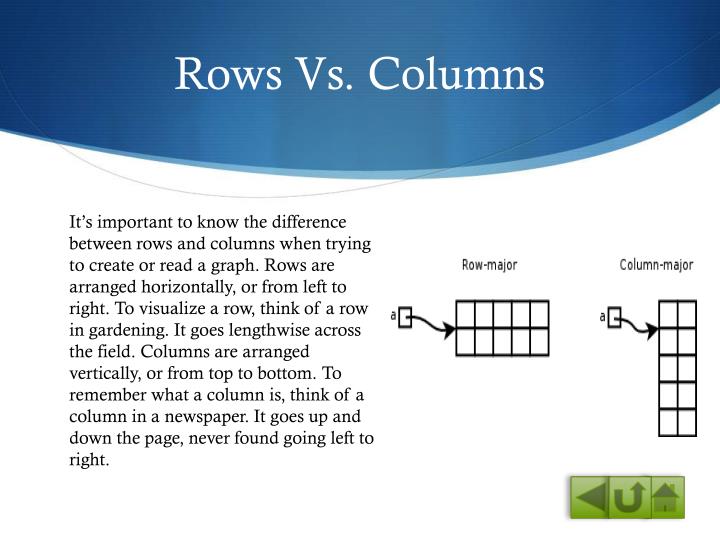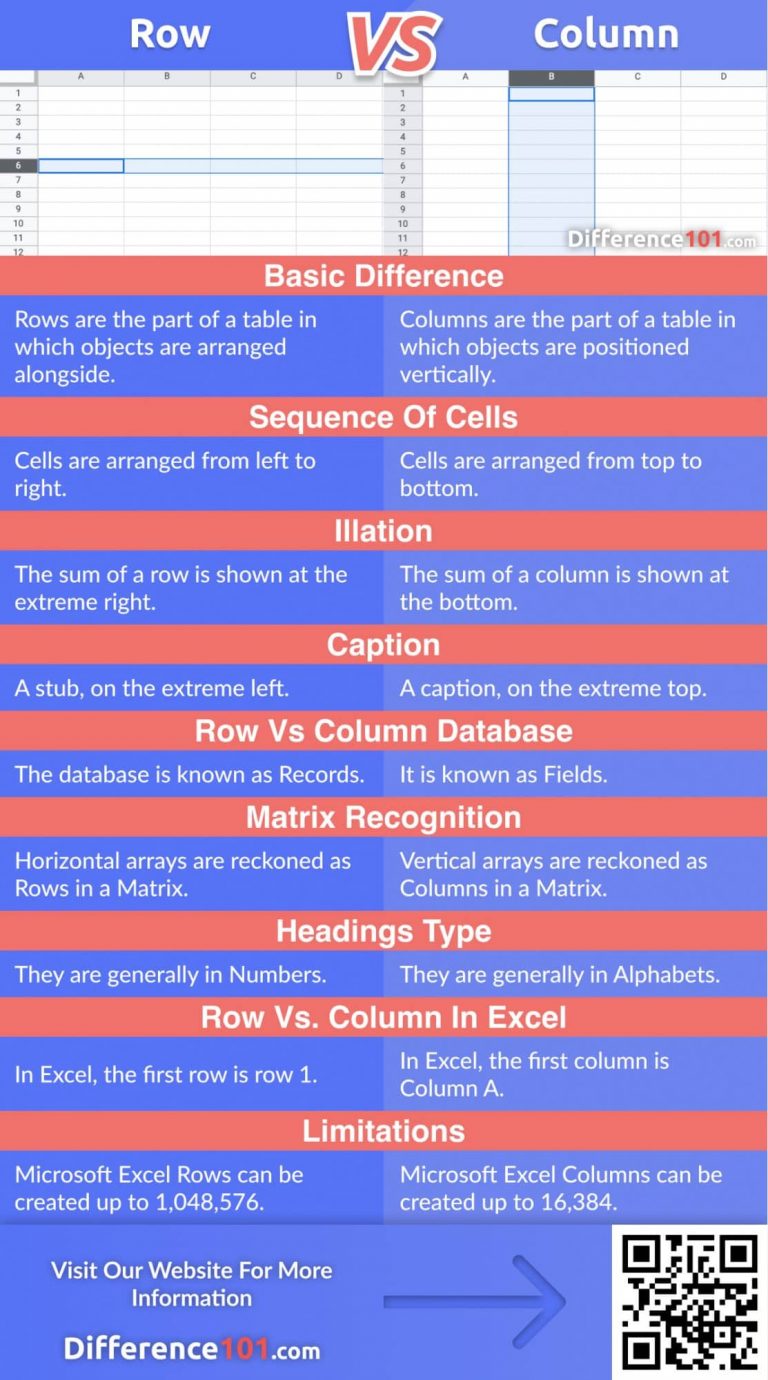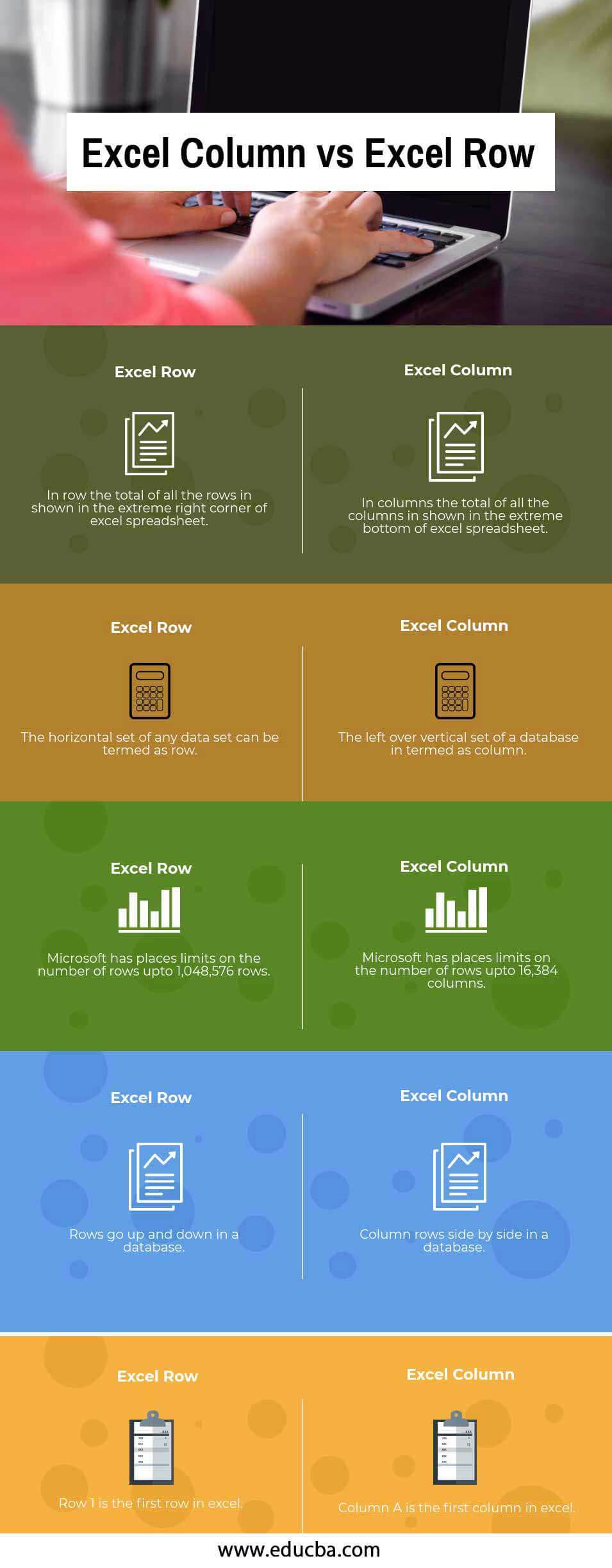
ROW vs COLUMN Basic Difference between Column vs Row Confused Words
August 6, 2021 / #Excel Row VS Column in Excel - What is the Difference? Dionysia Lemonaki Microsoft Excel displays data in tabular format. This means that information is arranged in a table consisting of rows and columns. Rows and columns are different properties that together make up a table.

Row vs Column What's the Difference? Differencely
The row is an order in which people, objects or figures are placed alongside or in a straight line. A vertical division of facts, figures or any other details based on category, is called column. Rows go across, i.e. from left to right. On the contrary, Columns are arranged from up to down.

ROW Vs COLUMN Differences Between Column Vs Row (with Useful Examples
In Excel, a row is a horizontal line of cells running from left to right, while a column is a vertical line of cells running from top to bottom. Rows are identified by numbers (1, 2, 3, etc.), and columns are identified by letters (A, B, C, etc.). Together, rows and columns create a grid-like structure called a worksheet.

Row vs column What's the difference between them? 1001 programming
The difference between rows vs columns is that rows are aligned horizontally, while columns are aligned vertically. Read on to learn more about rows vs columns and how to differentiate them. Contents: What is the Difference Between Column and Row? Row vs Column in Excel Column vs Row Examples Rows vs Columns Conclusion

Rows Vs Columns Difference And Similarity Of Rows And Columns CLOUD
Here is the short answer: 'Row' and 'column' both have several meanings. 'Row' is a noun for a set of information arranged in a horizontal line. 'Row' is a verb that means to propel a boat with an oar to arrange things in a row.

Rows And Columns Difference, Definition, Examples Embibe Exams
Row vs Column: The Difference Explained John Spacey, updated on August 25, 2023 A row is from left to right. A column is from up to down. These are common terms to describe the structure of data and things. The following are illustrative examples. Spreadsheets Spreadsheets such as Excel are tools for processing tables of data.

Row vs. Column Key Differences, Pros & Cons Difference 101
The difference: rows vs columns Additional note Excel Row Definition By definition, a row in excel is the horizontal part that shapes a worksheet in excel. To form an excel cell, a row meets with a column in one point in which we can fill our data. With row, we can know and refer to our data horizontal position in excel easily.

Row vs. Column What is the Difference Between a Row and a Column in a
Row Vs Column in Excel (Difference) Last Updated: October 29, 2023 - Written by Puneet Contents hide Difference Between Rows and Columns Points to Know Related Tutorials If you are new to Excel, you must know what the difference between a row and a column is. These two words are quite important for you to know about.

Row vs Column in Excel The Comprehensive Guide Studytonight
How to Navigate Rows and Columns in Excel? Here are two simple keyboard shortcut tips to navigate rows and columns in Excel. Press Ctrl + Down Arrow key to go to the last row of a data table or the last row of the sheet if there are all empty cells under the data table.To get back to the previous position, press Ctrl + Up Arrow ; Press Ctrl + Right Arrow key to go to the last column of a data.

Row vs. Column What is the Difference Between a Row and a Column in a
We can insert MATCH into the VLOOKUP function in place of the column number. The VLOOKUP function counts the first column as 1, but our MATCH function starts at column B, so it is necessary to add 1 to the column number for the VLOOKUP to return the value from the correct column. The formula in B12 is as follows: =VLOOKUP (B9,A2:M5, MATCH (B10.

Difference Between Row and Column Compare the Difference Between
Row VS Column Key Differences. A column is a vertical series of cells in a chart, table, or spreadsheet while a row is a series of data put out horizontally in a table or spreadsheet while. Columns are arranged from up to down. On the other hand, rows go across from left to right. The row heading is indicated by numbers whereas column headings.

Rows vs Columns (Differences) All The Differences
Rows and columns are a combination of horizontal and vertical areas of an Excel worksheet. In this article, we will cover the following two concepts in detail - Let's understand the concept of row vs column in Excel. Table of Contents Row in Excel Column in Excel ROW and COLUMN function Conclusion HELPFUL RESOURCES: Row in Excel

Row VS Column in Excel What is the Difference?
Cells that are aligned vertically are called a Column (as shown below) Cells that are aligned horizontally are called a Row (as shown below) Any cell in Excel would always be a part of one row and one column. For example, the cell below is present in column three and row four.

Row Vs Column Whats The Difference Between Row And Column Column Images
June 16, 2023 This article explains the fundamental differences between Row vs Column with examples, including advantages, limitations, etc: In the day-to-day world of business, data analysis is a routine task, integral to the successful operation of any business.

Row vs. Column Differences between Column vs. Row (with Useful
Excel Rows vs Columns helps us understand the difference between the Excel Rows and columns that make up a cell, range of cells, or table. In general terms, the vertical portion of the Excel worksheet is known as columns, and the horizontal portion is known as rows. There are 16,384 Columns and 1,048,576 rows in a worksheet.

Excel Row vs Excel Column Top 5 Best Differences You Should Know
Row vs Column in Microsoft Excel: Key Differences What's the difference between a row and a column in Excel? While working with Excel, you'll encounter rows and columns throughout your experience. These form the basic structure of an Excel worksheet, and understanding the difference between them is crucial for efficiently organizing your data.